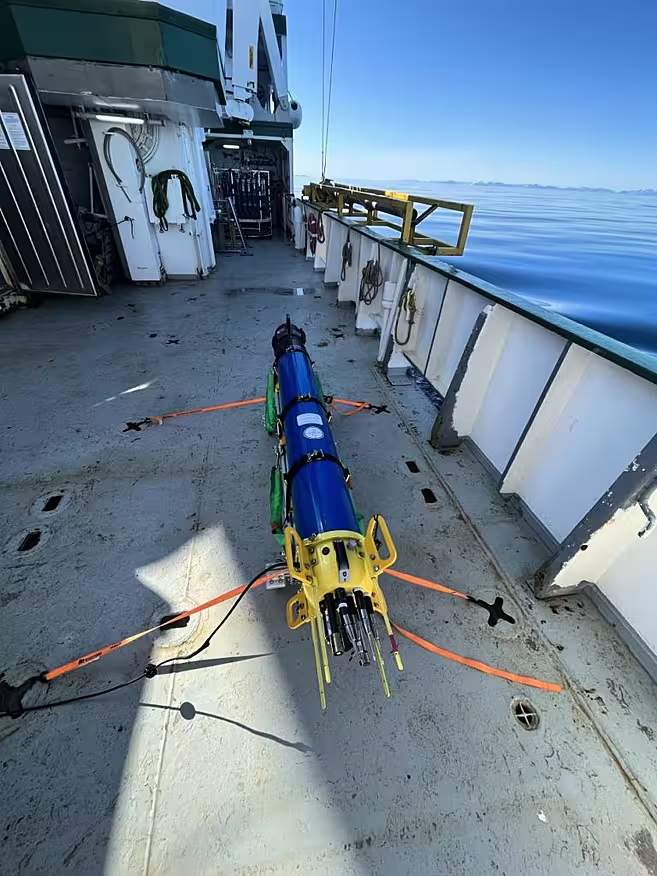Researchers at University of Galway have shed light on rare ocean mixing in Arctic waters - and its role in climate change
The team undertook an expedition to the Greenland Sea, in the Marine Institute research vessel, the Celtic Explorer.

The Air‐Sea Interaction Profiler (ASIP) undergoing tests on the deck of the R/V Celtic Explorer. Due to the movement of the ship, the instrument needs to be strapped to the deck, although the weather conditions were optimal as can be seen from the calm seas. Photo: Professor Brian Ward, University of Galway.
The team focused on a phenomenon known as cabbeling - which occurs when two water masses with different temperatures and salinities, but the same density, mix together.
And when that happens, the result is a denser mix, that sinks, triggering turbulence and vertical mixing.

An illustration of the cabbeling process. The interaction between a warm water intrusion beneath a cold fresh water cap of similar density resulting from ice melt at the surface gives rise to cabbeling densification and sinking‐induced turbulence. Also depicted is the Air‐Sea Interaction Profiler (ASIP) autonomous profiling instrument. Photo credit: Kevin McGraw, University of Galway.
The team made detailed observations of the process using a specialist high-tech robotic instrument that made repeated dives.
They say the results will improve scientists understanding of cabbeling, and its possible role in models of sea surface warming and Arctic ice melt.







